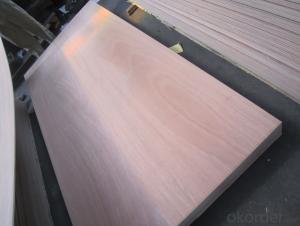Sma Commercial Solar Inverter
Sma Commercial Solar Inverter Related Searches
Ac Inverter For Solar Panels Solar Panel With Ac Inverter Gas Furnace With Ac Panda Hot Water Bottle Cover Minion Hot Water Bottle Cover Abb Solar Water Pump Inverter Solar Water Pump Philippines Extra Long Hot Water Bottle Solar Panel Dc To Ac Inverter Old Fashioned Hot Water BottleHot Searches
Philips High Mast Lighting Price List Bajaj High Mast Lighting Price List Evacuated Tube Solar Collectors Price Lorentz Solar Pumps Price Fish Tank Air Pump Price Aquarium Air Pump Price Chlorine Dosing Pump Price 100 Amp Cable Price Brass Cable Glands Price List Geogrid Fabric Price Doka Formwork Price List Data Cable Price Flipkart Otg Cable Price Flipkart Electric Jug Price Samsung Mobile Accessories Price List 300Mm Silicon Wafer Price Thermal Coal Spot Price 20 Foot Shipping Container Price Wholesale Laser Rangefinder Price Philippines Wholesale Drill Bit Price PhilippinesSma Commercial Solar Inverter Supplier & Manufacturer from China
Okorder.com is a professional Sma Commercial Solar Inverter supplier & manufacturer, offers integrated one-stop services including real-time quoting and online cargo tracking. We are funded by CNBM Group, a Fortune 500 enterprise and the largest Sma Commercial Solar Inverter firm in China.Hot Products
FAQ
- A solar inverter synchronizes with the grid frequency by constantly monitoring the frequency of the utility grid. It adjusts its own output frequency accordingly to match the grid frequency. This synchronization process ensures that the solar inverter's power output is in phase with the utility grid, allowing it to seamlessly inject solar energy into the grid without any disruptions or compatibility issues.
- PV grid-connected inverter and independent inverter in the control of what is the difference
- PV grid-connected inverter in the grid before the inverter needs to determine the phase voltage phase frequency, the first phase-locked, in the grid and power generation.
- No, a solar inverter cannot be used with a string inverter system. Solar inverters and string inverters are two different types of inverters that serve different functions in a solar power system. A solar inverter is designed to convert the DC power generated by solar panels into AC power for use in homes or businesses. On the other hand, a string inverter is used to convert the DC power generated by multiple solar panels connected in series, known as a string, into AC power. Therefore, these two types of inverters are not compatible with each other.
- Yes, a solar inverter can be used in a three-phase power system. In fact, three-phase solar inverters are commonly used in commercial and industrial applications where three-phase power is utilized. These inverters convert the DC power generated by solar panels into AC power that can be seamlessly integrated into the three-phase power grid.
- A solar inverter communicates with other components of a solar power system through various communication protocols such as wired interfaces like RS485 or Ethernet, and wireless technologies like Wi-Fi or Zigbee. These communication channels enable the inverter to exchange data and information with other components such as solar panels, batteries, and monitoring systems. This communication allows for real-time monitoring, control, and coordination of the system, optimizing its performance and ensuring efficient energy production and management.
- Yes, a solar inverter can be used in remote areas. Solar inverters are designed to convert the direct current (DC) generated by solar panels into alternating current (AC) that can be used to power electrical devices. As long as there is access to sunlight, solar panels can be installed in remote areas to generate electricity, and the solar inverter can then be used to convert and distribute that power for various applications. This makes solar inverters a useful and sustainable solution for remote areas that may not have access to grid electricity.
- A solar inverter handles harmonic distortion by using filters and control algorithms to reduce or eliminate the harmonics generated by the solar panels. These filters and algorithms help ensure that the electricity generated by the solar panels is clean and does not introduce any unwanted harmonics into the electrical grid.
- Yes, a solar inverter can be used with a solar water pumping system. A solar inverter is responsible for converting the DC power generated by solar panels into AC power that can be used to operate various appliances or systems. In the case of a solar water pumping system, the solar inverter converts the DC power from the solar panels into AC power to run the pump, enabling the system to function effectively.















































